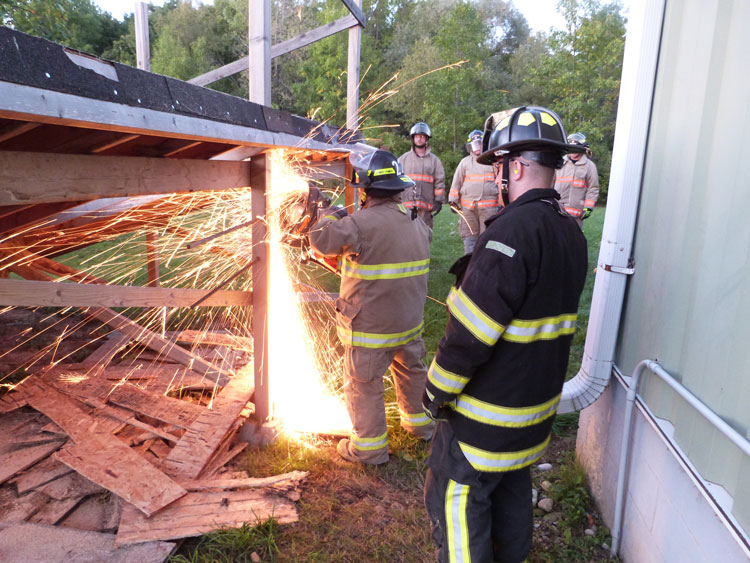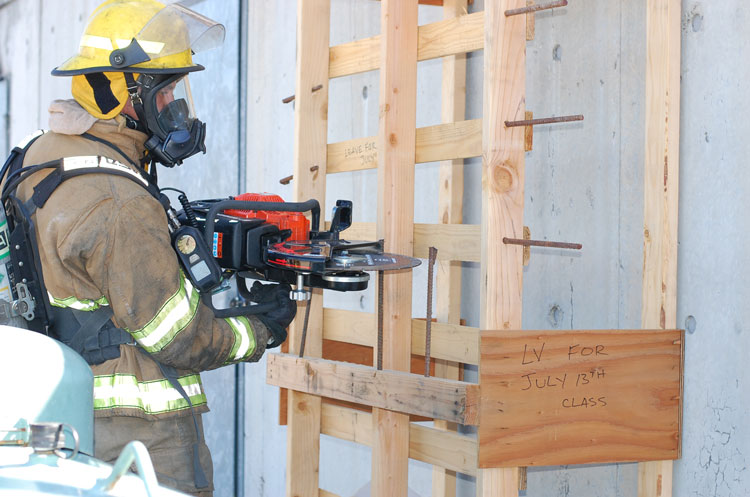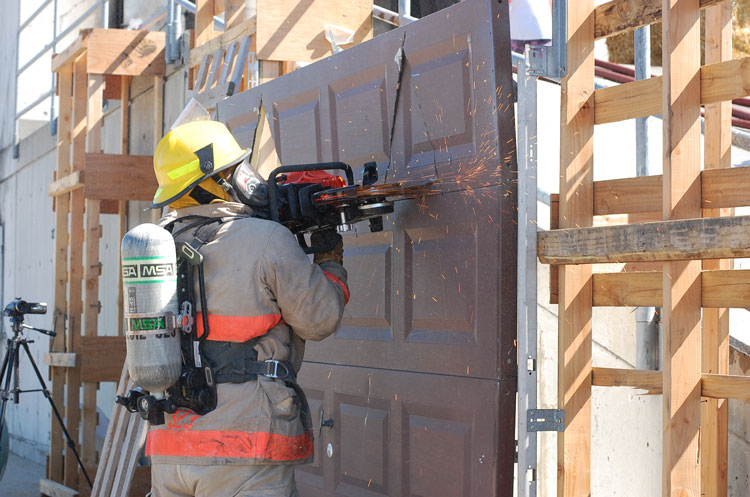
Photos and articles by Mark van der Feyst
In our last discussion, we looked at the rotary saw in terms of its power and mechanics as well as the types of blades that can be used. This month, we are going to turn our focus on the operational considerations of the saw with regard to practical application.
The first practical application is going to be safety. As mentioned previously, the rotary saw will rotate three times faster than that of a vent saw. Because of this increase in speed, there is more noise associated with the small engine working faster. Using a rotary saw will be loud. Depending on what position you are holding it in, the decibels coming off of the saw will be enough to cause temporary hearing loss or a ringing in the ears for some time afterwards. The noise created is not only from the small engine but also from the cutting of the material. The contact between the material and the blade will be the biggest contributor of the noise. The type of material being cut will dictate how loud the noise will be. Depending on the operation itself, hearing protection will be a good idea to wear when using the saw.

(1)
Along with the noise is also the sparks that are created when cutting a metal-like material. A great deluge of sparks will be created when contact is made between the saw blade and metal. As seen in photo 1, a good flow of sparks is an indicator that the blade is cutting properly, but it also sends sparks and other flying debris off the blade and towards the operator. Make sure that you have the proper personal protective equipment on when using the saw so as to prevent minor burns from the sparks. Ensure that the blade shroud is positioned properly to deflect the sparks away from the operator’s face.
Another area of safety is the rotating blade. With the blade spinning on its vertical axis, centrifugal force is being created. This is where the operator will feel the saw wanting to “walk” away on them when they are holding the saw while running. This point is sometimes considered one of negatives of using a rotary saw. The saw will produce centrifugal force when it is not being held straight vertically. The key to using the saw is to hold it at 0º or at 90º. This will keep the saw in line and not contribute to the saw “walking away.”
Along with the blade being held straight, it can present itself as a cutting hazard to other firefighters while it is spinning. When the cutting operation has been completed, the saw blade will not stop automatically as it does on a vent saw or on a saw that has an electric brake. The blade will continue to spin freely until it stops by force or until it loses enough momentum to stop on its own. The operator must bury the blade into some type of material next to the cutting area to stop the blade by force.
The last area associated with the safety aspect of the saw is to maintain a circle of safety. When cutting operations are being conducted, a circle of safety always needs to be maintained by the crew members around. This involves giving enough space around the saw and the operator so that they are not directly interfered with by the cutting operation. This will ensure that no one gets hurt or affected by the saw and the operation of it.
The next practical application deals with the physical limitations of the rotary saw. This is where the fatigue factor sets in. A rotary saw can be fatiguing for a firefighter when long-duration cutting operations are taking place. The position of the firefighter and the position of the saw being held will contribute to the overall fatigue factor. When working in pairs, it not a bad idea to trade off the cutting operation intermittingly to reduce the overall fatigue.

(2)
The last practical application is the different positions to hold the rotary saw. On the saw there are grab handles all around to allow the firefighter to hold the saw in different positions. The first position to consider is cutting at mid height, as shown on photo 2. When we must use the saw at this height it is best to rest the saw on the forearm like you are cradling a baby. This will allow your whole upper body to be used to hold the saw and allow you to gain better control over it.

(3)
The next position to consider is cutting above your head, as shown in photo 3. Again, use the provided grab bar to hold the saw in position while cutting. This position will be fatiguing for the firefighter, so ensure that you trade off with a colleague if need be. This is not a desirable cutting position as the saw is above the head area. Stability and control of the saw are reduced when in this position.

(4)
The last position is where we are cutting at head or shoulder height as shown in photo 4. In this position, the firefighter will want to rest the saw on their shoulder if they can, or, as seen in the photo, lock their one arm underneath the saw to hold it in position. This position will expose the firefighter to the extreme noise of the saw, which will warrant hearing protection.
No matter what position you are using the rotary saw in, familiarity with those positions will be an asset for the firefighter. If your fire department has a rotary saw, train with it to become familiar with its safety considerations, the positions to hold it, and the physical considerations its use entails.
 Mark van der Feyst has been in the fire service since 1999 and is a full-time firefighter in Ontario, Canada. He is an international instructor teaching in Canada, the United States, and India, and at FDIC. Van der Feyst is a local level suppression instructor for the Pennsylvania State Fire Academy. He is also the lead author of Residential Fire Rescue (Pennwell).
Mark van der Feyst has been in the fire service since 1999 and is a full-time firefighter in Ontario, Canada. He is an international instructor teaching in Canada, the United States, and India, and at FDIC. Van der Feyst is a local level suppression instructor for the Pennsylvania State Fire Academy. He is also the lead author of Residential Fire Rescue (Pennwell).
MORE MARK VAN DER FEYST
Truck Company Operations: Using the Rotary Saw, Part 1
Truck Company Ops: Elevator Rescue
Firefighting Back-to-Basics: Standpipe Systems

